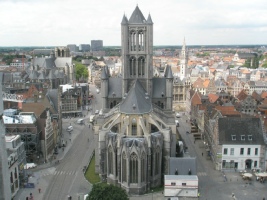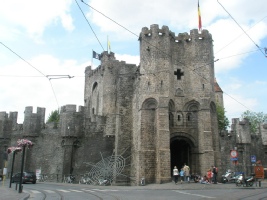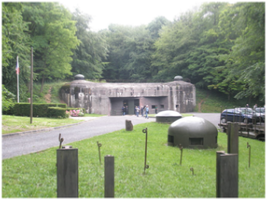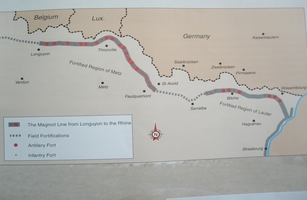



The Parish Church of St George the Martyr, Waterlooville


Looking down on Ghent
I visited St Bavo’s Cathedral which has 22 altars, to see the art works kept there, among them being the famous “Adoration of the Mystic Lamb” painted by Hubert and Jan van Eyck around 1432. It was in the 16th century after Charles the 5th (their Charles) was baptized there, that it was rebuilt from being a Romanesque church to a spacious Gothic one.
Next on the agenda was to climb the Belfry which was close by to see the views, well I actually went up by lift this time! After which it was on to the Counts Castle an imposing medieval castle in the heart of the city, have a walk around the battlements and inside including the dungeons. There were some very gruesome implements of torture in the dungeons; they seemed to be so sadistic in the middle Ages. I was informed that this castle was built not to protect the people, but the counts from the people!
It was then time to sit and have a beer by the canal in the centre of town in an area called The Graslei, before heading back to the campsite and putting feet up with a G&T at the ready, for medicinal purposes you understand. The next day would be a long drive, 340mls down to Fort Schoenenbourg on the Maginot Line, stopping overnight at Dahn to give us a full day down in the tunnels.
To many of us older generation, the Maginot Line was often talked about when we were children, there were stories of how it did not do what it was built for, that was to stop the German invasion of France. Of all the fortified lines constructed through out history it is up among the most famous, the Great Wall of China being the best known. It took its name from Andre Maginot who was the French War Minister and its most fervent advocate. Work started in 1930 it crosses the Lorraine from west to east then Alsace from north to south, covering a distance of more than 400 km; many of the fortifications are still visible today along its route. Powerful underground fortresses, bunkers, casements and advanced posts, the advanced posts were for guiding artillery fire.

Some of the objectives behind the building of it were to:-
“Stop a surprise attack”, as happened in Poland, Belgium, Austria and many other countries that were overrun by Hitler in the war.
“Cover the mobilization time of the French army”,
“Protect the Alsace-
“Serve as a base for counter attack”
and most controversial of all “make any attack come through Belgium” violating its neutrality which would make Great Britain enter the war, as we would not and could not afford to let the Germans take the port of Antwerp. Also this would allow France to amass most of its troops in the Belgium border region. The line was never completely finished due to the extremely high cost and the squabbling and penny pinching by the then government. No different from our current lot then really?
Castle of the Counts

View in Petite FranceEntrance to Fort Schoenenbourg
I found it fascinating down in the tunnels, there were railway tracks, hospitals, power plants and air cleansing tanks in case of gas attack, dormitories and workshops, two electric trains each weighing 5 tons and every thing that would be needed in the event of war. The guns large and small came up out of the ground like mushrooms, with their domed tops and thick steel casings they must have been formidable. After Hitler had surrounded Dunkirk he turned his attention to the Maginot Line and Fort Schoenenbourg. Only one man was killed in the eleven days it held out, before being ordered by the French High Command to surrender and become prisoners. The fort Commander, who had ignored previous surrender calls, Chief of Battalion Rennier, was taken prisoner and never seen again. History lesson over.
All in all I found the tour below ground fascinating and well worth the journey to visit; it gave me a greater understanding for the building of it and the enormity of it and events at the time.
That’s it for now; next instalment will be back in Germany and including the Eagles nest.
Christine L Culley

Maginot Line
The Happy Wanderer - Ambling around Europe
After finishing the long saga of my Baltic States trip I thought someone might say enough is enough give it a rest, but they did not so here I am again.
Leaving Calais behind I headed east to Belgium, before turning southwards to make my first night’s stop in Ghent. As I had not done any sightseeing in that town before I decided to spend a couple of nights on the campsite there, giving me a whole day to wander around. The bus into town left from just outside the campsite making the trip to the centre of town nice and easy, being early June there were not many sightseers to contend with, but it also meant there was not a lot going on. Ghent was one of the most important cities in Europe around the 14th century; it was larger than London, second only to Paris.
Easter and Spring Edition 2010